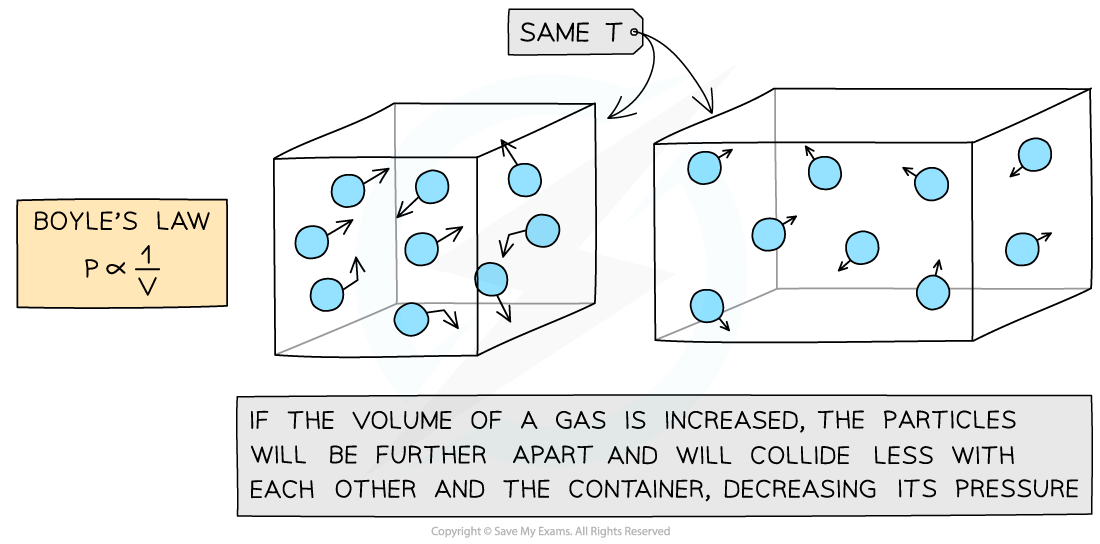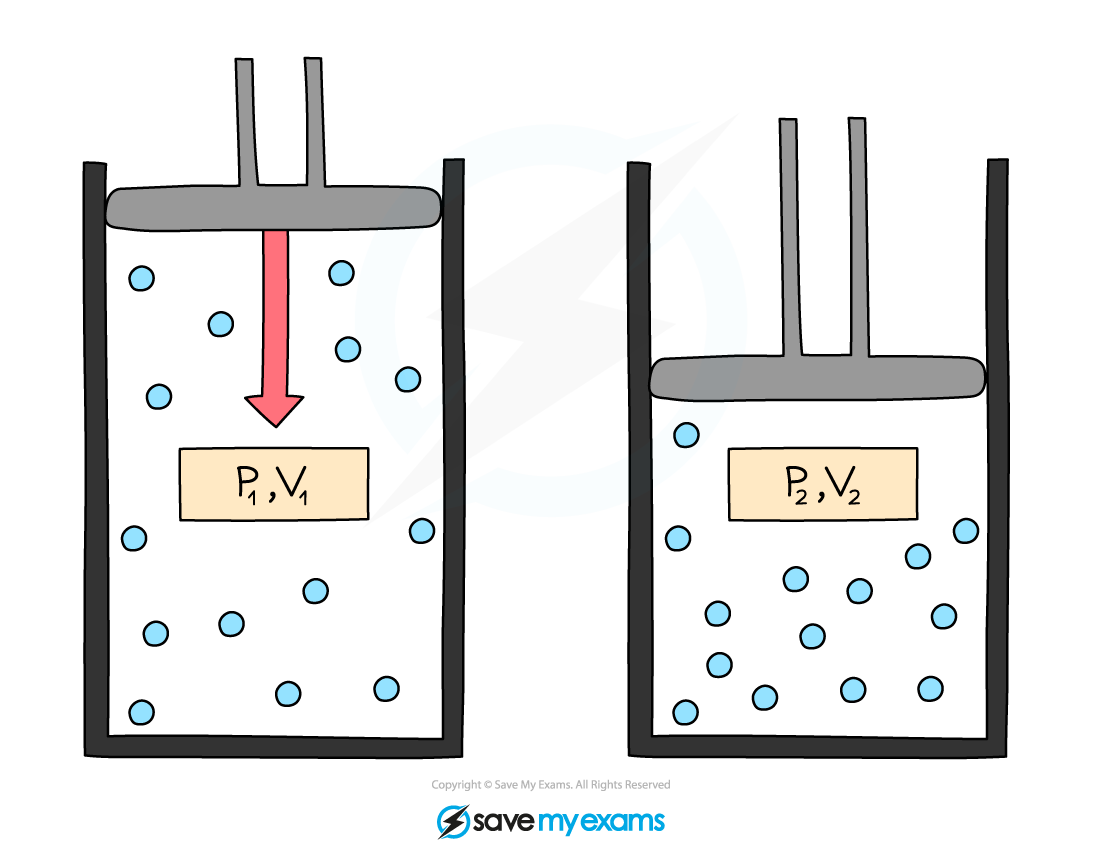Boyle's Law (Edexcel GCSE Physics): Revision Note
Exam code: 1PH0
Did this video help you?
Calculating Change in Pressure & Volume
For a fixed mass of a gas held at a constant temperature:
pV = constant
Where:
p = pressure in pascals (Pa)
V = volume in metres cubed (m3)
This means that the pressure and volume are inversely proportional to each other
When the volume decreases (compression), the pressure increases
When the volume increases (expansion), the pressure decreases
This is because when the volume decreases, the same number of particles collide with the walls of a container but more frequently as there is less space
However, the particles still collide with the same amount of force meaning greater force per unit area (pressure)
The key assumption is that the temperature and the mass (and number) of the particles remains the same

Increasing the volume of a gas decreases its pressure
This equation can also be rewritten for comparing the pressure and volume before and after a change in a gas:
P1V1 = P2V2
Where:
P1 = initial pressure in pascals (Pa)
V1 = initial volume in metres cubed (m3)
P2 = final pressure in pascals (Pa)
V2 = final volume in metres cubed (m3)
This equation is sometimes referred to as Boyle's Law

Initial pressure and volume, P1 and V1, and final pressure and volume, P2 and V2
Worked Example
A gas occupies a volume of 0.70 m³ at a pressure of 200 Pa. Calculate the pressure exerted by the gas if it is compressed to a volume of 0.15 m³.Assume that the temperature and mass of the gas stay the same.
Answer:

Examiner Tips and Tricks
Always check whether your final answer makes sense. If the gas has been compressed, the final pressure is expected to be more than the initial pressure (like in the worked example).If this is not the case, double-check the rearranging of any formulae and the values put into your calculator. One pascal is a very small amount of pressure, and you will typically meet pressures in the order of kilo-pascals. The pressure on you at the moment because of the air around you is equal to 100 kPa, so use this as reference when considering if your answer makes sense.

Unlock more, it's free!
Did this page help you?